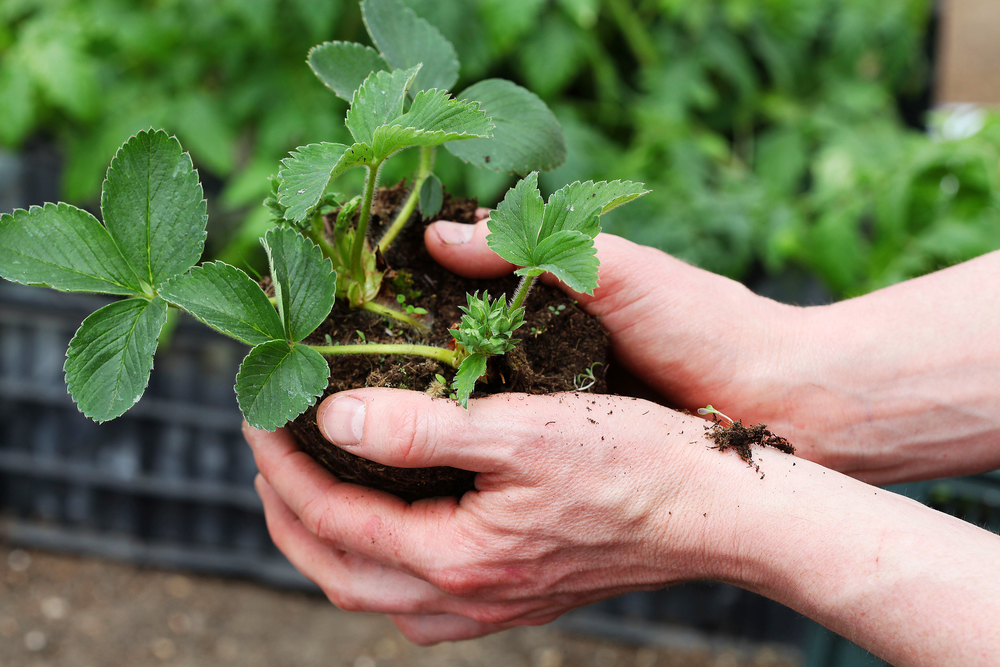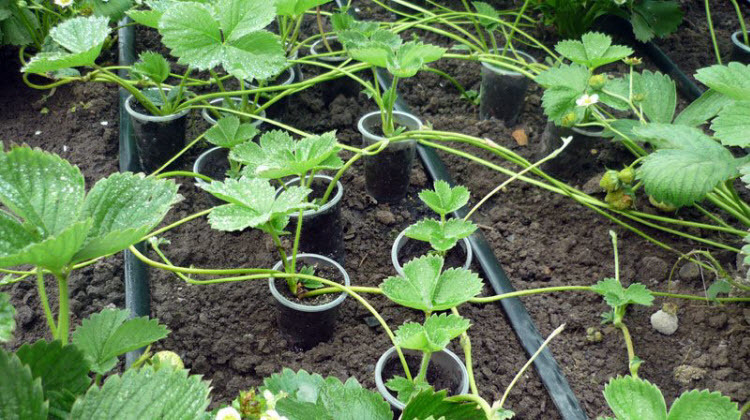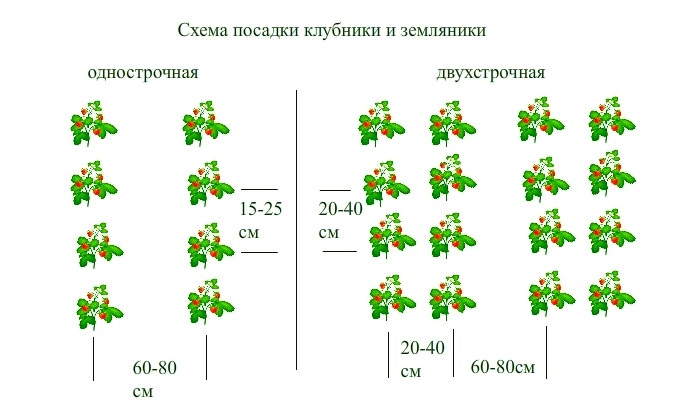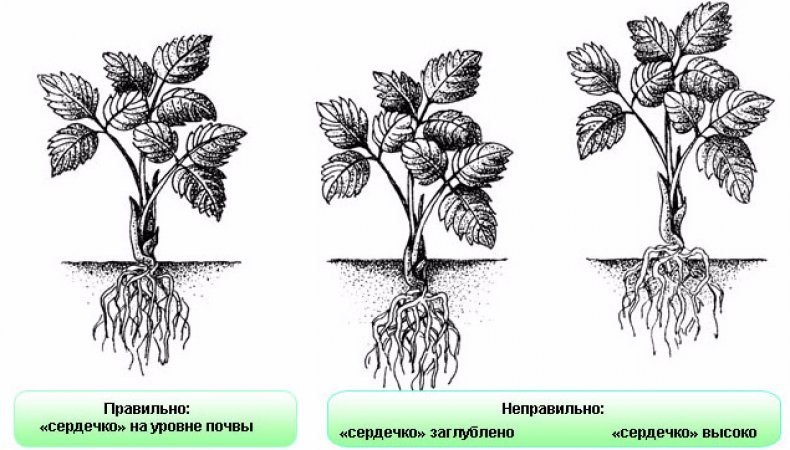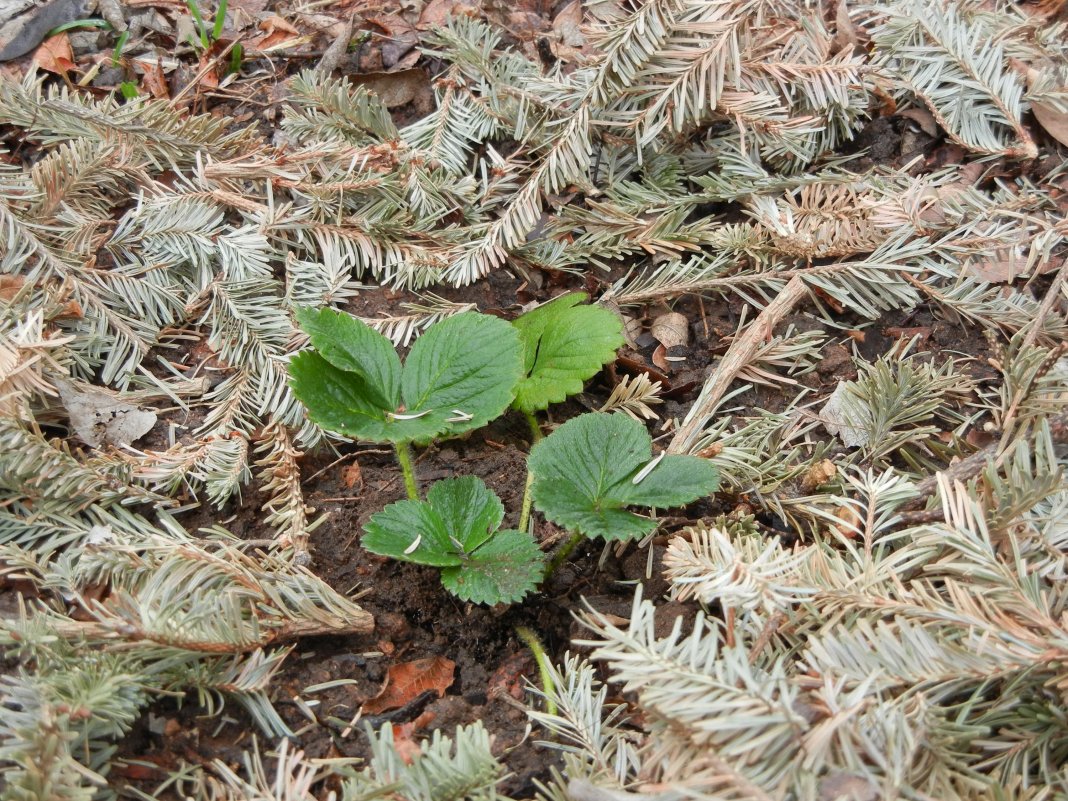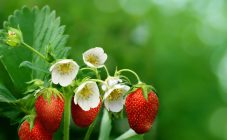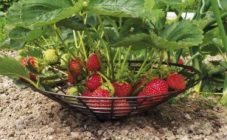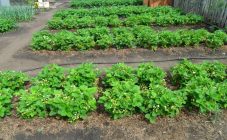Content:
Any gardener in the garden has at least one bush of delicious and sweet strawberries. But over the years, the bush grows old and bears berries of small sizes, the taste of which is unsaturated and less and less sweet. Buying seedlings of strawberry varieties such as Holiday or Gigantella Maxim is very expensive. Therefore, the question arises: how to save your favorite strawberries without buying new seedlings? You can plant your favorite strawberry bush. The planted bushes will give berries as in the first year: large, with a rich taste. Every experienced gardener knows how to plant strawberries with a mustache. This article is written for beginners.
When to plant a strawberry mustache
There are three periods for planting strawberries with a mustache: spring, summer and autumn.
Warm weather is expected for transplanting in the spring. It is necessary that the daylight hours be long, but the sun is not scorching. The absence of the scorching sun ensures that the young leaves do not dry out, and the bush will take root better. Typically, this weather lasts from late April to early May. Spring planting ensures that the roots have time to develop before winter and frost. But in the first year of planting, you should not wait for the harvest.
Summer seating runs from late July to early August. A cloudy, not hot day is chosen for seating, the soil should be saturated with moisture. During the summer, the strawberry bush produces more whiskers. Garden strawberries have enough time to take root before the onset of cold weather. Wintering in the snow prepares the garden strawberry for fruiting.
An autumn transplant is recommended for those regions where summers are hot and dry. For a successful seating, you must wait for the rainy period. Tempering with winter frosts will strengthen the plant, and it will be ready for fruiting next year.
How to plant and transplant a strawberry mustache
Strawberries are convenient because they are able to propagate themselves. Each bush gives a mustache. All a gardener needs to propagate a plant is to know how to plant strawberries with a mustache. This method has its own characteristics.
If you remove a rich crop from the bush, then the mustache will grow poorly, the plant will ache and become depleted. Poor quality seedlings will produce unhealthy offspring.
The mustache must be harvested from a bush that has been harvesting for more than a year. First, a young annual shrub will not produce fertile seedlings. Secondly, in the first year, the yield of the bushes is assessed and the best of them are marked for seedlings for the next year. Flowers are removed from the selected bushes during flowering so that the plant gives all its strength to the growth of young shoots. During the period, the bush gives from 7 to 10 shoots.
Most of the whiskers should be removed, leaving only the largest and largest shoots. Small shoots do not take root well and may not yield crops.
After the first rosettes appear on the shoots, they are attached to the ground and watered abundantly and fertilized so that the rosette gives roots as soon as possible. An alternative and effective way is to plant the outlet in a glass with soil. For better root growth on a rosette, it is not recommended to remove the mustache from the bush for 2-3 weeks.
After the appearance of several leaves on the outlet, the antennae can be cut off. The appearance of the leaves ensures that the plant has given strong roots and can independently obtain nutrients from the soil, without the participation of mother bushes. After 2-3 weeks, the socket, along with a lump of earth, can be dug up and planted in a permanent place. It is recommended to transplant in rainy weather or in the evening, not sunny, followed by irrigation of the soil.
Planting a strawberry mustache in summer
It is very profitable to plant strawberries in the open ground with a mustache in the summer, because during the winter the strawberries will take root, undergo hardening, and the next year it will be possible to get a rich harvest.
When to plant a strawberry mustache in summer
The best time to plant seedlings in open ground is late July, early August. The time depends on the climatic conditions. In the warmest regions, seedlings can be planted in June, if weather conditions permit. In regions with a long summer, when warm weather lasts until early autumn, shoots are planted at the end of August.
For 1.5-2 months before planting, it is necessary to prepare the soil, because garden strawberries do not tolerate a high concentration of fertilizers. Fertilize the soil with peat, compost or nitrophosphate. Highly acidic soil must be limed. For this, wood ash is introduced into the soil. Alkaline soils are acidified with peat, needles, opiski. Weeds are carefully removed. Future beds are checked for pests. For the prevention of insects, the soil is treated with ammonium nitrate. The soil is loosened to a depth of 15 centimeters.
How to plant a strawberry mustache in summer
There are many schemes for planting seedlings in open ground. The most popular are the one-line and two-line charts. When planting seedlings, the rule applies: the denser the planting, the higher the yield. A distance of 15-20 cm is maintained between young bushes. The beds are formed every 60-80 cm. For planting, a hole is formed with a depth of 10-12 cm.
How to dig in a mustache
When planting, it is necessary to place the shoot heart at ground level. If the heart is deepened into the ground, it will rot, but if, on the contrary, is placed high above the ground, it will dry out. The length of the roots should not exceed 5-7 cm. If the roots are longer, they are cut to the required size. It is important to properly position the roots in the soil. The roots must be spread out. The roots are evenly distributed over the ground, after which they need to be dug in with moist soil.
For the convenience of landing, you can use a trick. Water is poured into the prepared hole and the bush is planted directly into the water. Thus, the roots will straighten in the water and take the correct shape in the ground.
When to plant strawberries with antennae in autumn
Autumn is a great time to transplant strawberry whiskers into the ground. Experienced gardeners choose this season because it is in the rainy autumn that the roots of the plant will receive the required amount of moisture. At the beginning of autumn, the soil is still warmed up and keeps warm. Young bushes are not threatened by the scorching sun, and the cold weather is still far away.
Autumn planting can be of three types:
- Early (from the beginning to the end of September),
- Average (from late September to mid-October),
- Late (from mid-October to the first frost).
The most popular are early and mid plantings. It is very difficult to plant sprouts correctly in the late period - there is a risk of the seedlings freezing.
The ideal time to transplant seedlings into the ground in autumn is the evening after rain. The soil at this time is sufficiently moistened, the bright sun does not affect the seedlings. The best place to plant will be the soil on which legumes or crops grew in the previous year.
Planting in autumn soil step by step:
- The soil is leveled and loosened;
- Holes are dug, 10-15 cm deep;
- The earth from the holes is mixed with humus;
- Inside the hole, mounds of earth are formed;
- The seedlings are immersed on a mound, the roots are straightened;
- Sprinkle the bush with earth in such a way that the place where the leaves grow is at ground level;
- The earth is loosened, watered abundantly and sprinkled on top with compost mass.
After successful planting, the young plant needs proper care.
Gardening tips and tricks
To grow garden strawberries with a high level of fruiting, you need to properly care for a young bush. Proper cultivation includes several mandatory points:
- The first 10 days, strawberries are recommended to be watered every 2-3 days, in small portions with warm water, trying not to fall on young leaves. Watering is best done in the early morning or late evening.
- After watering, it is necessary to loosen the soil under the seedling for improved access of the roots to oxygen.
- For better moisture retention, mulching is carried out. Straw, agrofibre, dried humus are suitable as a mulching layer.
- The soil under the strawberry bush is regularly removed from weeds and treated from pests and insects. A solution of water with wood ash is suitable as a prophylactic agent. An excellent chemical is Karbofos, copper oxychloride or boric liquid.
- Young strawberries need regular feeding. In autumn, phosphorus-potassium fertilizers are used. In the spring, nitrogen fertilizers are applied under the root to stimulate growth.
Further care is to prepare the plant for winter. Mulch for the winter is removed from under the plant so that the bush does not become infected and sick during the winter. In November, a layer of peat, sawdust and needles is laid under the bush. The layer should be at least 5 cm in order to provide the required amount of heat. It is important to cover only the roots, and not cover the entire bush. To prevent rodents from damaging the roots of the plant, naphthalene or peat soaked in creolin is placed next to the strawberry beds.
Growing strawberries with a mustache is not as difficult as it might seem at first glance. If everything is done correctly and consistently, the strawberries will grow quickly. A well-chosen planting time, neat transplanting, proper care, in the end, will allow the gardener to harvest a rich strawberry crop. After the snow melts, it is necessary to remove the spruce branches, get rid of the pests, if they do appear, loosen the soil and remove the deformed sheets. Applying strength in the fall, in the spring they get strawberry bushes ready for fruiting.
